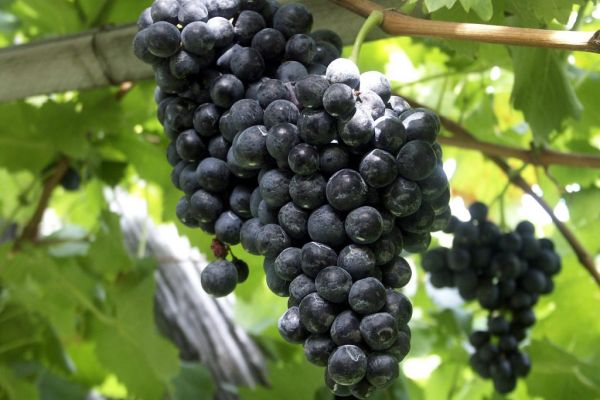Kevin Ecock examines Austria’s innovative wine sector and how the region promises fresh ideas for the industry.
A few years back, I was presented with a CD by Austrian wine producer Willi Opitz, entitled Sound of Wine. It was a recording of his wines as they fermented in his cellars in Illmitz, near the Hungarian border. Clearly, it was unique.
More recently, I met with Laurenz Moser as he toured the world, extolling the virtues of Grüner Veltliner-based wines and letting us know why the new €70 million Changyu winery in China was named after him (Chateau Changyu Moser XV). Stories like these add emphasis to why Austria can claim, after an extraordinary history of winemaking stretching back to at least 700 AD, to be a modern and innovative wine-producing nation.
Last year, the Austrian Wine Marketing Board ran a brilliant tasting of Austrian wines in Dublin, Ireland. Twenty importers showed wines from just over 50 wineries. Willi Klinger, MD of the Austrian Wine Marketing Board, was on hand to present an update on how his trade is organised and progressing, while his compatriots poured an exceptional variety of styles.
A Mild Revolution
For the uninitiated, most of Austria is too mountainous for anything associated with vines. The areas that are suitable lie to the east of the country, above and below Vienna. In addition, while the Austrian trade is dominated (almost 30%) by the one white-grape variety – Grüner Veltliner – it would be very unfair to characterise Austrian wine accordingly.
Currently, Austria is undergoing a mild but striking revolution within its trade, as many very small operators are either ceasing to trade altogether or amalgamating into larger units. This is most dramatic in the vineyards where, over the years, people and nature have combined well to produce some of the most refreshing wines possible from a unique landscape. This may be a contributing factor to the success that Austria has enjoyed recently in its export markets, where consistency of style and packaging are vital ingredients.
Predictably, Germany, with 54%, takes the lion’s share of exports, with Switzerland in second place. Encouraging for Austria, however, is that it now has a broad base of countries, each of which is experiencing a surge in demand for its wines at premium price points.
Willi Klinger tells us, “In all of these countries [the Netherlands, the UK, the US, China, Belgium, Scandinavia and Ireland] we have made strong, consistent efforts to build efficient distribution.”
It seems to be working, with an export market currently worth about €180 million to its exchequer and an export value that has increased year on year since the mid-1980s.
Varieties
In Austria, grape varieties are dominated by the white Grüner Veltliner (30%), with its attractive spiced finish, and the sumptuous red Zweigelt (14%), but there are 33 other permitted varieties (21 white and 12 red).
While many of these are regionally important and add to Austria’s distinctive vinescape, none of these 33 make up more than 8% of the total vineyard area. An extra and interesting dimension to each of these is whether or not their wines are labelled Klassik (unoaked).
Climate, physical geography and local geology have, over the years, determined the location of vines and the use of specific grape types. Thus, regional styles developed, many of them unique to Austria. That said, the country continues to explore its potential and, in the recent past, has isolated its DAC zones and will continue to identify others.
Indeed, the newest DAC is noteworthy, as it is the Wiener Gemischter Satz DAC, in Wien. Gemischter Satz translates as ‘field blend’, an old style produced from vineyards within the city limits of Vienna that are planted with a broad mix of grapes, such as Pinot Blanc, Riesling, Traminer, Grüner Veltliner, Welschriesling and others. The wine is made from the mix of the total.
There has been significant move towards organic estates in the recent past (10% of the land under vine), a move that Willi Klinger feels will continue.
Indeed, the Austrian Wine Marketing Board (AWMB) now includes sustainability (authentic and natural) as one of the three pillars under which it markets its wines. The other two are tradition (culinary and cultural) and modern/lifestyle (a dynamic and competitive wine scene). It adds to this mix a growth in natural and orange wine production and a renewed focus on the production of sparkling wines (Sekt and frizzante).
Last year’s AWMB-organised wine fair, in Dublin, introduced the trade to a wide variety of wines from every region of Austria. Their quality was of a high standard, with producers seeking representation.
Opportunity
These fine wines provide an opportunity for both large and small importers. Indeed, it was noteworthy how many small to medium-sized importers were represented at the fair.
Austria, therefore, has a signature grape with its Grüner Veltliner, unique and reliable top-class dessert wines such as its Beerenauslese and Eiswein, from the shores of Lake Neusiedl, in Burgenland, whose eastern shore now boasts the Neusiedlersee DAC red wines, made from the world-class Zweigelt grape.
Austria has history and a modern outlook, and a truly fine distribution of premium labels. Couple these with a mad desire by the Austrians to match their wines with foreign cuisine, a genuine wine-travel industry, and a focus on wine education, and the outlook is good for Austrian wines.
© 2017 European Supermarket Magazine – your source for the latest retail news. Click subscribe to sign up for ESM: The European Supermarket Magazine.














